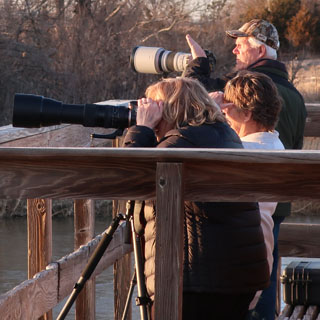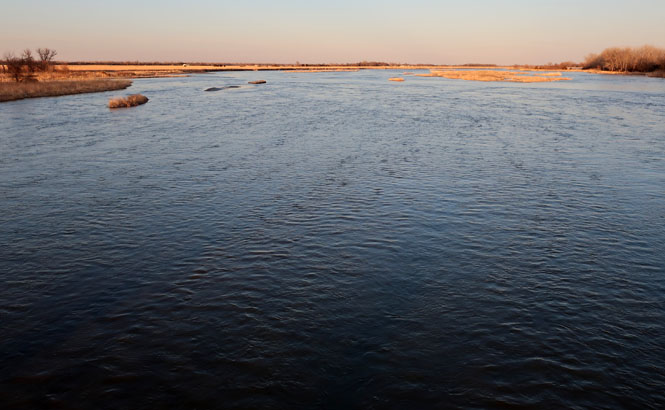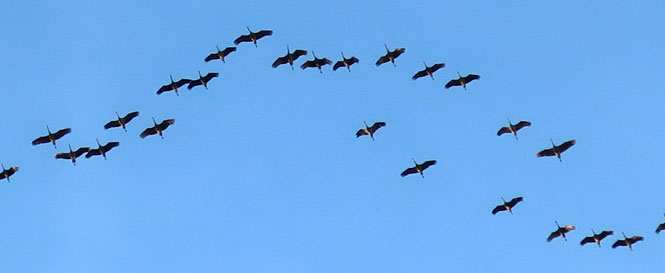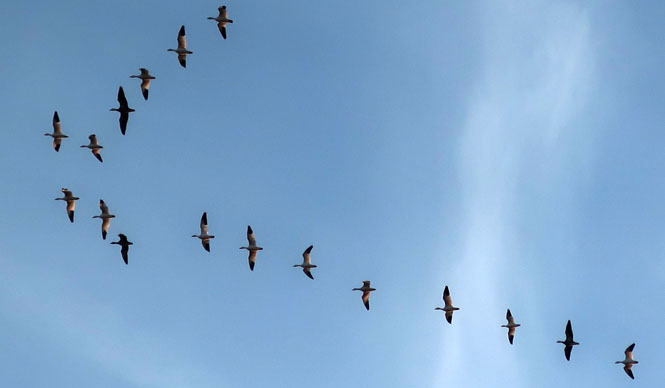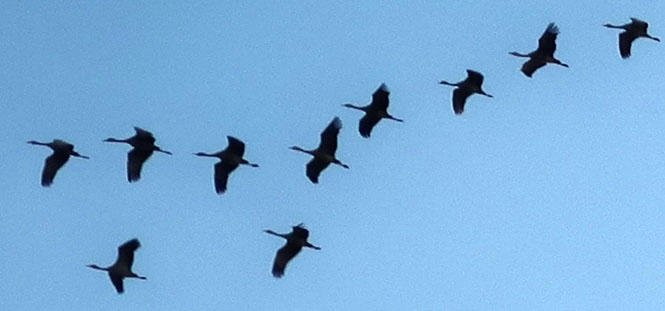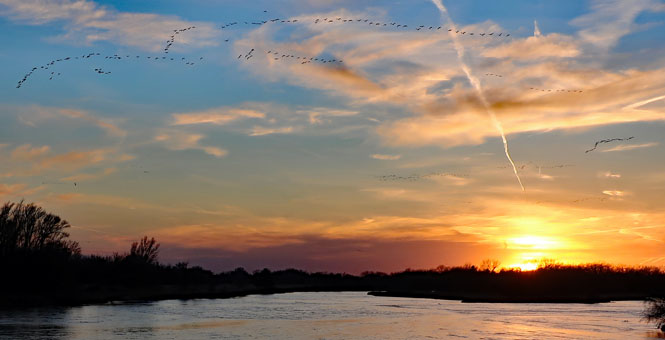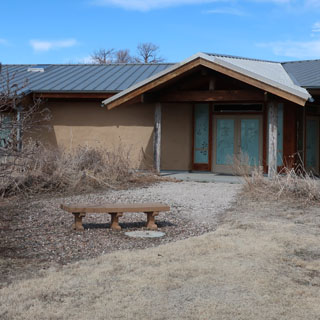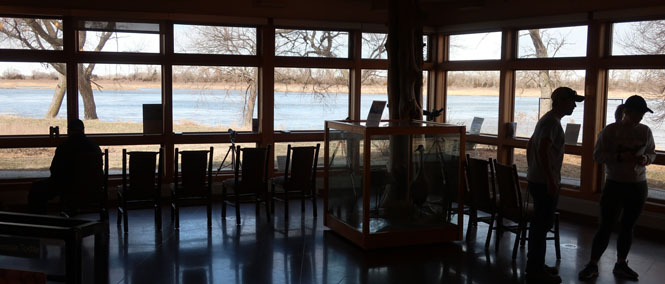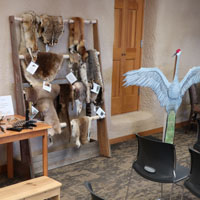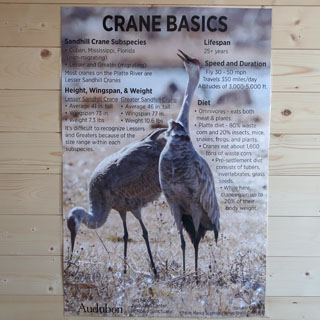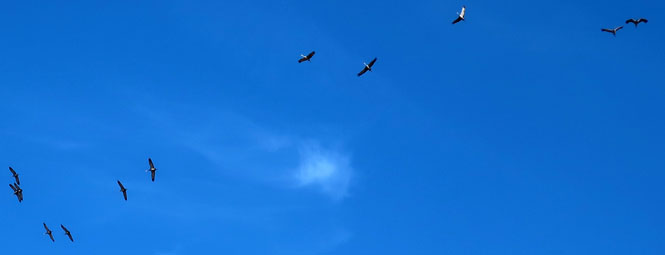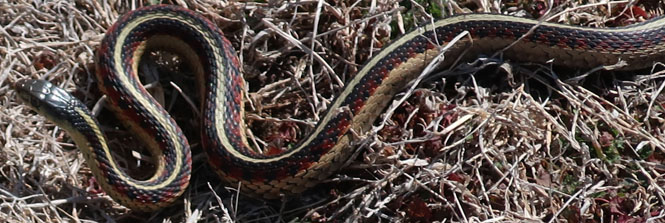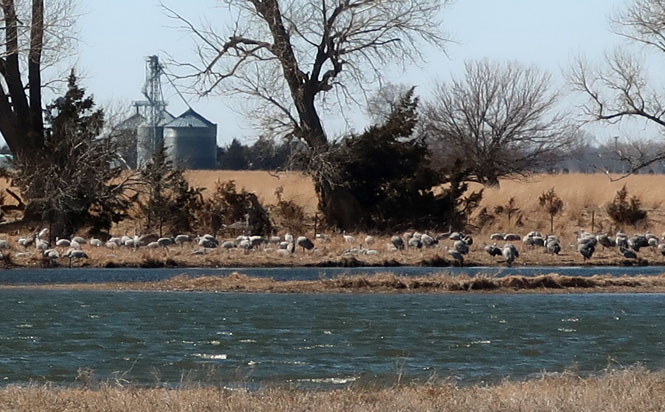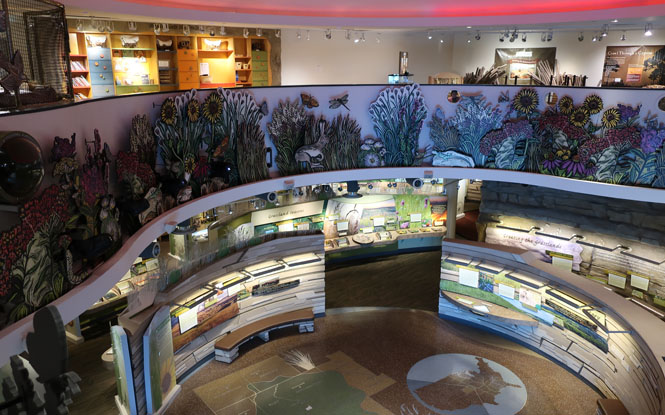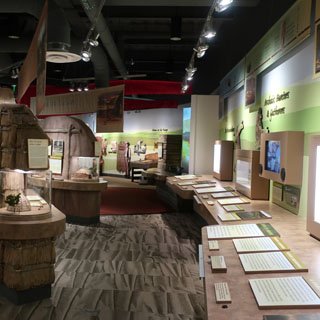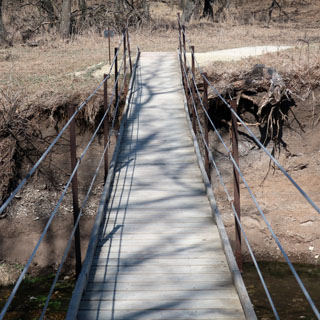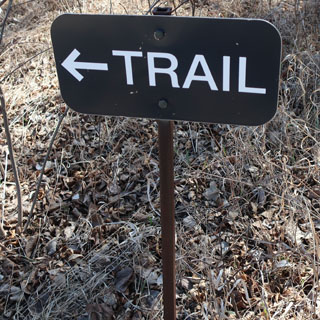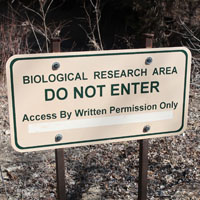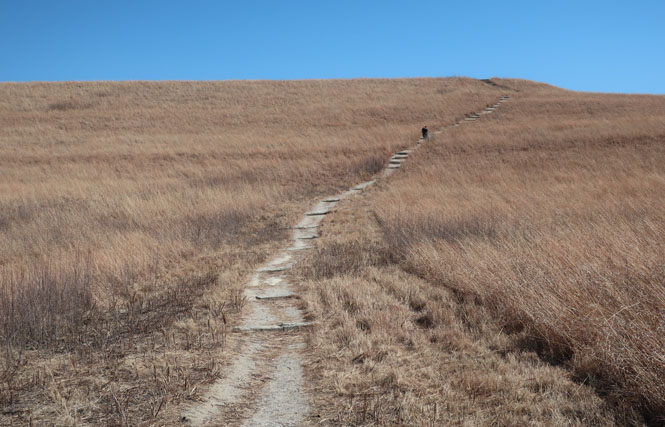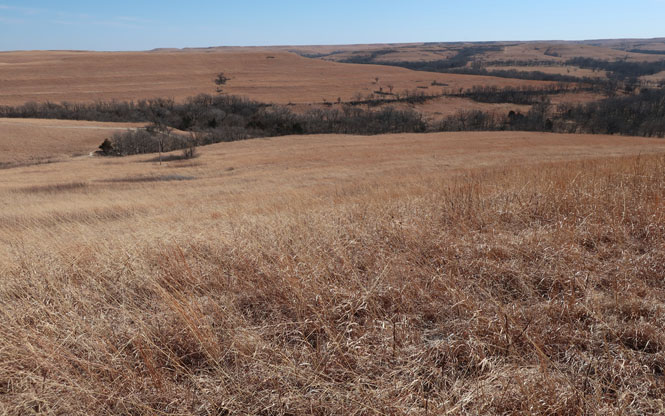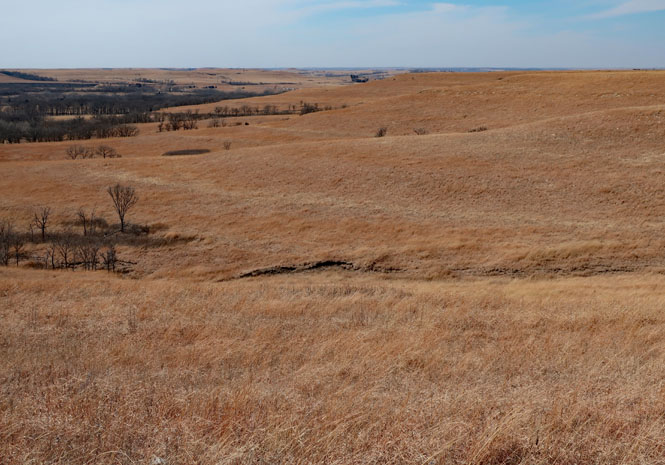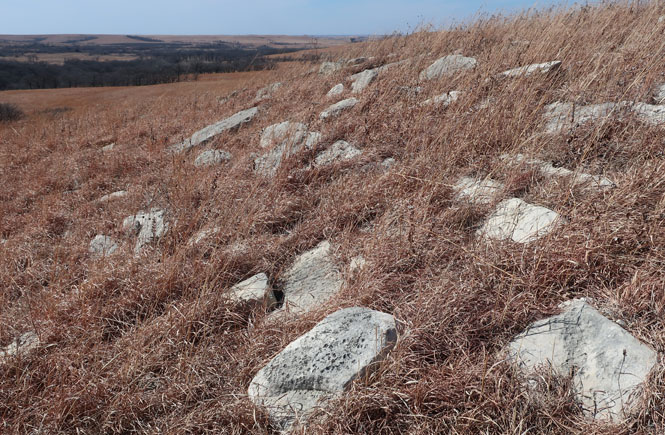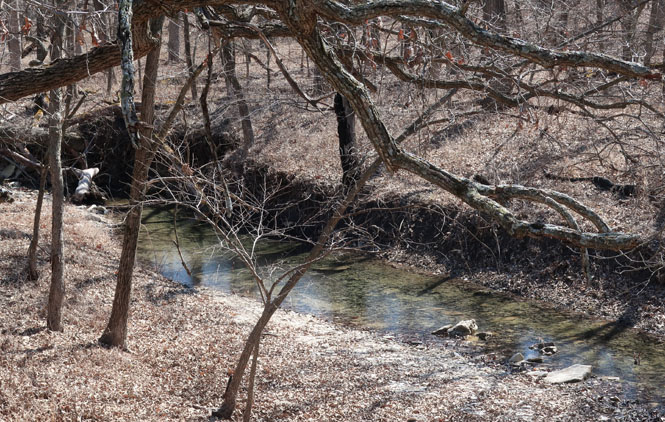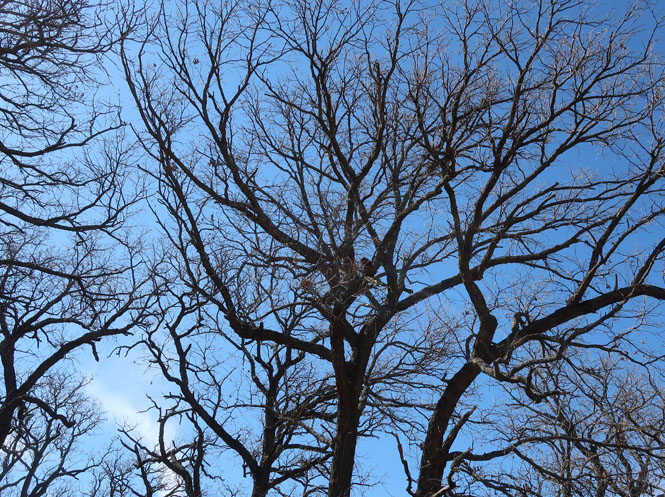February 6-8, 2020
I've been aware of the Sandhill Crane migration and their stopover on the Platte River for years, but never have made the trip.
Many thousands of these remarkable birds annually migrate from the Gulf Coast to Alaska and even on to Siberia. The Platte River valley has been used for thousands of years as a resting place and for a dependable supply of food.
 Nebraska
Nebraska
A good place to see the birds is along the river between Kearney and Gibbon, Nebraska. Of course, this isn't the only place where Sandhills will land, but the odds are very high that you'll see then here.
Found in several scattered areas of North America, Sandhill Cranes reach their peak abundance at migratory stopover points on the Great Plains. The early spring gathering of Sandhills on the Platte River in Nebraska is among the greatest wildlife spectacles on the continent, with over a quarter of a million birds present at one time. Although they are currently very common, their dependence on key stopover sites makes them vulnerable to loss of habitat in the future.
-- Audubon.org website
On the map (below) I'll be at location #2 and the bridge and will later go to locations #4 and #5.
The Fort Kearney State Recreational Area is well prepared for the throng of visitors from around the country and even the world. The arrival of the cranes is a significant event in the Kearny area, so you might want to make sure that there will be a room available at the hotels.
The old Burlington Railroad bridge is a perfect place to see the formations fly down the river. These aren't floating birds (they're not geese), so the surrounding fields are where they'll eventually land for the night.
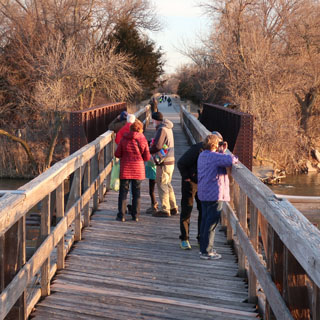
The Platte River, flowing east.
Cranes overhead.
Geese are allowed, too. On occasion you'll see the wrong bird flying in formation with the others. I guess it all works out.
Cranes.
With the sun almost down, the formations just keep coming. The nearby cornfield is full of cranes.
The Audubon Center at the Lillian Annette Rowe Sanctuary isn't far away. There are several volunteers on the site to help with the less-informed visitor (like me).
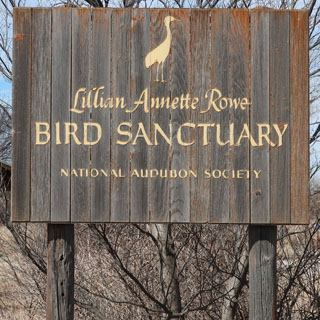
Scopes are available if you need one. I noticed that many visitors came with very impressive scopes and cameras.
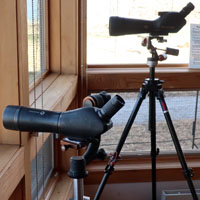

There are a number of very nice blinds along the river bank.
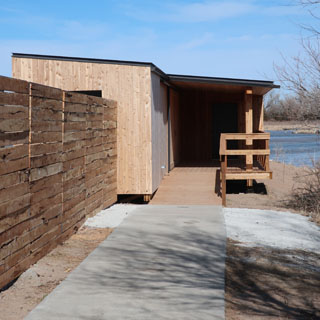
You might want to watch where you step.
The surrounding dirt road has pull-outs and blinds to watch the birds from a distance. There are strict rules that prohibit bothering the birds or encouraging them to fly.
The Crane Trust Visitor Center is not associated with the Audubon Society, but I gather both groups get along well--they have the same goal.
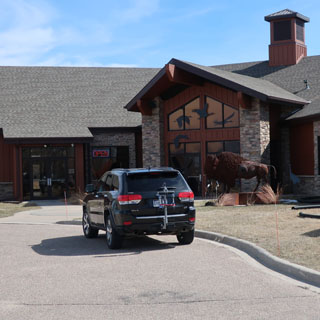
Some very high quality photographs and paintings are available in the center.
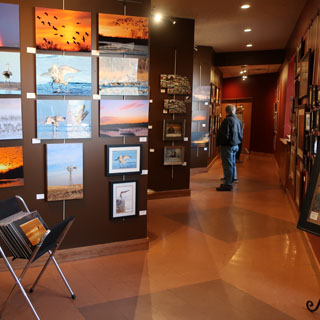
To be clear, none of the photographs (below) are mine. That last one is actually the door to a storage area.


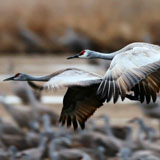
You cannot be in Nebraska and not have a Runza. So, I did.
 Kansas
Kansas
The Flint Hills Discovery Center, Manhattan, Kansas is quite an impressive introduction to the tall grass prairie.
On the left (below) is a display of different prairie grass, but with the difference that the roots are also shown. As is clear, what is below ground is much longer than what you see above ground.

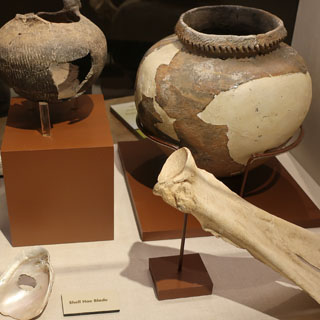
This is a panoramic theater the presents the prairie. It also includes "snow" that falls (lightweight suds) and during this burning scene, you could feel the wind and smell the smoke. Really.
The Kanza Prairie Biological Station is only a few miles outside of Manhattan. There a very nice system of trails that lets you choose just how far you want to walk. It's really just one large loop with a couple of shortcuts you can take.
The Flint Hills region encompasses over 1.6 million hectares extending throughout much of eastern Kansas from near the Kansas-Nebraska border south into northeastern Oklahoma, and contains the largest remaining area of unplowed tallgrass prairie in North America. Hence, the vast majority of Konza Prairie, and the surrounding landscape, has not been plowed and retains its native characteristics.
KPBS is operated as a field research station by the KSU Division of Biology. The station is dedicated to a three-fold mission of long-term ecological research, education, and prairie conservation. It is a unique outdoor laboratory that provides opportunities for the study of tallgrass prairie ecosystems and for basic biological research on a wide range of taxa and processes. The station is open to scientists and students from throughout the world. [KPBS website]
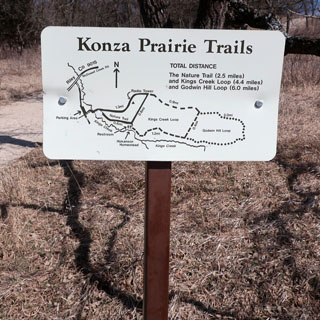
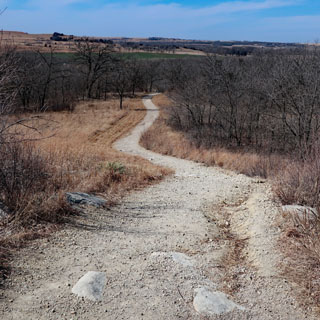
This is not a park, and the land isn't here only for the enjoyment of hikers. The Nature Conservancy owns the land with research being done by other organizations.

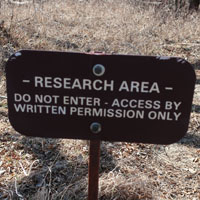
Only a small percentage of the once-vast tall grass prairie still exists as it used to be, never broken by a plow. Of course, it's still winter, so the grass is not green. Even so, it's a good time to be here.
This gives the answer to the question of why this land has never seen the plow.
North Branch King's Creek.
Today was windy (30mph) so the wind through the tall dry grass make quite a loud noise.
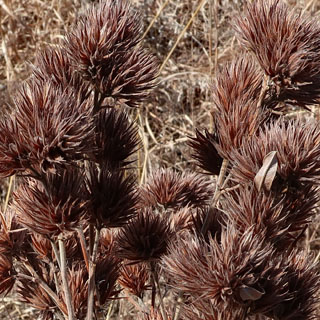
The remains of an early ranch house.
Cranes and prairie; a good combination.

